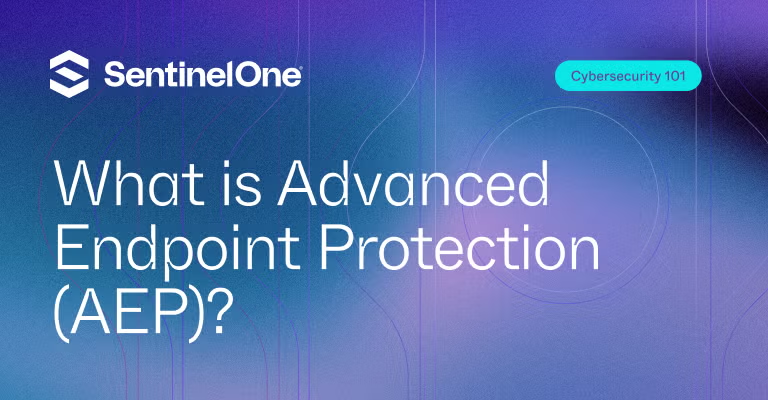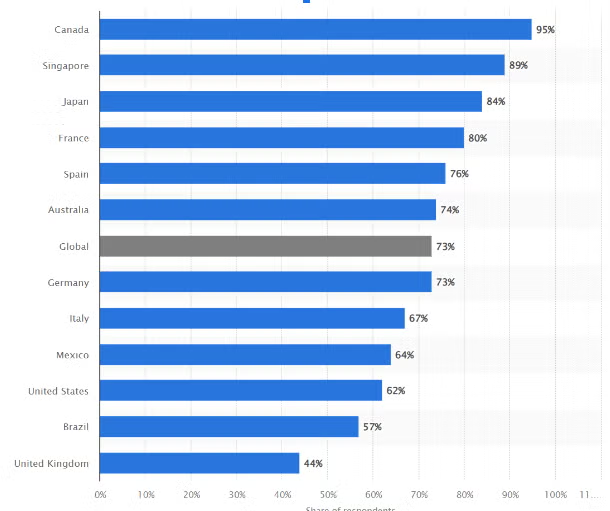The former US Secretary of Defense Donald Rumsfeld in his book “Known and Unknown” says:
“There are many things of which we are completely unaware—in fact, there are things of which we are so unaware, we don’t even know we are unaware of them.”
Unlike typical cyberattacks, which are often quick and destructive, advanced persistent threats (APTs) are far more insidious. APTs operate under the radar, using sophisticated methods to maintain control over compromised systems for extended periods.
Because of their stealthy nature, APTs can easily bypass traditional antivirus systems, making it essential to use more advanced methods to detect and prevent these threats.
Advanced endpoint security (AEP) software is designed to identify and mitigate these unknown threats, ensuring that your systems remain secure.
The reason why AEP is critical is because it addresses complex threats in a way current conventional tools can not. As cyberattacks become more evasive, businesses face increasing financial risks.
Data shows that about 67% of companies are unaware of APTs and are left vulnerable to data breaches, which cost upwards of $4.45 million on average per incident.
With AEP in place, organizations can maintain a proactive stance on cybersecurity and have a much better chance of taking out these advanced threats before they cause irreparable damage.
This article will look into the importance and benefits of AEPs and how they can bolster your IT defenses even against the most subtle and long-term cyber threats.
 What Is Advanced Endpoint Protection (AEP)?
What Is Advanced Endpoint Protection (AEP)?
Advanced endpoint protection refers to cybersecurity solutions that provide comprehensive protection for endpoint devices like personal computers (PCs) and mobile devices.
AEP integrates advanced technologies like artificial intelligence (AI), machine learning (ML), and behavioral analysis to help with early detection, prevention, and swift response to known and unknown threats in real-time.
The working mechanism of modern AEP software goes beyond just setting up walls on attack, it’s much rather about foresight. AEP constantly anticipates, scans, and adapts to new threats without waiting for malware signal definitions to catch up.
Plus, with the ability to quarantine compromised devices remotely, AEP minimizes risk while maintaining business continuity.
Why Do Organizations Need Advanced Endpoint Protection Capabilities?
In 2024, the Center for Strategic and International Studies (CSIS) reported that approximately 1,000 significant worldwide cybersecurity events since 2006 have had the potential for catastrophic loss.
A 2023 survey further revealed that nearly 62% of US companies were at risk of a significant cyberattack. This brings forward the pressing need to reduce uncertainty in cybersecurity through proactive advanced endpoint threat detection technology.

To ensure the success of a business, a continuous flow of information is non-negotiable. The impact of IT risks extends beyond the IT department—it touches every area of the organization.
It is telling that over 75% of the costs incurred from business continuity and IT security failures hit a company’s bottom line directly rather than being confined to departmental IT budgets.
This shows that cybersecurity risk management is a critical business priority, not just a technical concern. Some major reasons why enterprises need advanced endpoint protection include:
-
Reputational Damage from Security Breaches
When personal data is compromised, customers lose trust and often feel betrayed. A survey by Okta and YouGov showed that 42% of consumers in the US would lose trust in a company that mishandles personal data.
The most vital stakeholders—employees, consumers, shareholders, investors, business partners, and competitors—are integral to a company’s success.
Their contributions, whether in work, capital, resources, or influence, are foundational. A breach not only jeopardizes these relationships but also threatens the very stability of the enterprise and hurts the brand.
AEP enhances security posture and prevents breaches by identifying and mitigating risks before they escalate, safeguarding the organization’s reputation, and maintaining customer trust.
-
Increased Financial Cost of Data Breaches
The average cost of a data breach in 2024 is $4.88 million, a 10% jump from 2023’s $4.45 million. This includes detection, escalation, notification, and lost business costs.
The ripple effect of a breach can extend to shareholder confidence and stock prices, which often plummet following a publicized security incident.
Additionally, regulatory penalties for non-compliance are growing more severe. Under data protection laws like Article 83(5) of the GDPR, legally imposed fines can reach up to 4% of a company’s revenue turnover from the previous fiscal year, escalating the financial implications even further.
AEP reduces the financial cost of breaches by employing real-time threat detection and automated incident response. By minimizing the duration and impact of attacks, AEP reduces associated remediation, regulatory, and operational costs.
-
Ineffectiveness of Antiquated Antiviruses
When an infected file is identified, it may sometimes be repaired or, at the very least, quarantined to prevent the virus from spreading. However, the challenge is that traditional virus detection methods are insufficient against newer, more sophisticated threats.
53% of respondents in the SentinelOne global ransomware report indicated that they had legacy antivirus software in place yet it failed to prevent a ransomware attack.
The problem lies in these antivirus solutions relying solely on signature-based detection, which struggles to identify new or rapidly changing threats.
Advanced endpoint protection (AEP) overcomes this limitation by leveraging artificial intelligence and machine learning to detect known and unknown threats in real-time, significantly lowering the risk of breaches.
Other reasons why IT professionals, C-suite executives, and business owners need advanced endpoint protection to bolster their IT defense systems include:
| Challenge | Impact on organization | How advanced endpoint protection addresses these challenges |
|---|---|---|
| Overwhelming volume of security alerts | Security teams are bombarded with numerous alerts, leading to alert fatigue. Critical threats may be overlooked, increasing the chance of a successful attack. | AEP provides intelligent threat prioritization and automated incident response. This allows teams to focus on the most critical issues, filtering out the noise. |
| Dwell time and identification of malware | The average dwell time—when a threat remains undetected in a network—can be over 200 days, giving attackers ample time to cause damage. | AEP dramatically reduces dwell time by continuously monitoring and analyzing endpoint behavior. This allows for quicker identification and neutralization of malware before it can spread. |
| Increased IT management complexity | Managing multiple security solutions increases complexity and the potential for security gaps. | AEP consolidates endpoint security into a single, unified platform, simplifying management and ensuring consistent security across all devices, both on-premises and remote. |
| Total cost of ownership (TCO) concerns | Managing multiple security products increases direct and indirect costs, making it challenging to justify security investments. | AEP reduces TCO by integrating multiple security functions into one solution, reducing the need for additional products and lowering overall security costs. |
Leading the Way in Endpoint Security
See why SentinelOne has been named a Leader four years in a row in the Gartner® Magic Quadrant™ for Endpoint Protection Platforms.
Read Report
3 Benefits of Advanced Endpoint Protection
It might come as a shock to know that about 70% of cyberattacks originate from targeted endpoints. Endpoints remain the weakest link in IT infrastructure as results from Forrester’s survey show that 15% of data breaches are traced back to compromised or missing devices.
It is compounding that with the FBI reporting that a laptop is stolen every 53 seconds in the United States.
The first major benefit of advanced endpoint protection is that it pulls your organization out of all that risky stat bracket and keeps you a step ahead. Here’s how AEP benefits your organization
1. Integrates Seamlessly with the Existing Tech Stack
The strength of advanced endpoint protection lies in its deep integration with the broader security ecosystem.
Advanced endpoint protection (AEP) solutions leverage APIs for secure and comprehensive data sharing, enabling organizations to:
- Improve automated workflows, including advanced incident response processes
- Simplify the collection, management, storage, and reporting of real-time telemetry data
- Align management, identity, and security platforms, enabling additional protective features and functionalities
- Adopt contemporary security protocols grounded in zero trust principles, ensuring strict verification of devices and credentials for every access attempt
- Bring IT and security teams together, allowing them to safeguard endpoints and enterprise resources across all devices and operating systems effectively
2. Improves Resource Allocation Via Automation
Advanced endpoint protection frees up resources by automating the threat-hunting process, easing the workload on security teams. Security experts can then concentrate on more critical activities like evaluation and remediation.
This efficiency enhances risk management and indirectly leads to cost savings, as fewer resources are needed to handle and mitigate threats.
3. More Accurate Detection and Response Times
Advanced endpoint protection leverages self-learning algorithms powered by AI and ML to continuously refine its threat detection capabilities.
These advanced technologies improve accuracy by learning from each threat encounter for faster and more precise responses. The result is quicker threat containment to protect critical IT assets more effectively.
Why Is AEP Critical for a Comprehensive Cybersecurity Strategy?
Just think of it: imagine having to defend a castle with limited soldiers. No matter how talented they are, they can only be in one place at a time.
Today, many companies suffer from a shortage of cyber skills, and more than half of breached organizations are struggling with a lack of security staff. The average cost of a data breach in 2024 is $4.88 million, a 10% jump from 2023’s $4.45 million.
In this regard, advanced endpoint protection (AEP) serves as a force multiplier. It enables your team to use artificial intelligence and automation, which will help them think better and faster while covering more important areas.
Businesses that widely apply AI technologies to their processes related to the prevention of breaches (for example, attack surface management or red teaming) manage to lower such costs by around $2.2 million compared to those that do not employ AI in prevention.
Besides boosting safety, AEP’s dependency on AI also solves the skills gap by creating more efficient procedures. Therefore, it is an imperative part of any modern cybersecurity strategy due to these two benefits: savings on expenses and higher productivity levels.
While AEP is fundamentally a tool it can also be viewed as part of a plan for a strategic framework that guides business outcomes, while still being used as an object to execute them. Here’s how:
- Strategic integration: Unlike many standalone tools, AEP integrates easily into your broader cybersecurity strategy, aligning with business objectives such as risk management and compliance.
- Operational continuity: Its capabilities ensure that systems remain functional and productive, thereby supporting business continuity and reducing operational risks.
- Resource optimization: By automating routine security tasks and providing efficient threat management, AEP allows your team to focus on higher-value activities.
Protect Your Organization’s Data with SentinelOne’s Advanced Endpoint Security Solution
SentinelOne is a leading cybersecurity provider offering advanced endpoint protection through its Singularity platform. The software leverages machine learning to identify and block unknown threats, including zero-day attacks, in real-time.
It combines strong prevention with an all-inclusive ability to respond to incidents, thus facilitating the speedy investigation and resolution of security breaches.
With user-friendliness in mind for all skill levels, SentinelOne also includes endpoint protection advanced features to safeguard your network against sophisticated threats.
Key Features
- Neutralize threats with EDR precision: SentinelOne endpoint detection response (EDR) combines static and behavioral detections to effectively neutralize known and unknown threats, automating responses to suspicious behavior to prevent analyst fatigue.
- Accelerate incident understanding and resolution with Storylines: By preserving context across process trees and reboots, it streamlines investigations and leads to faster conclusions. In practice, storylines can help an enterprise quickly trace and resolve a breach by connecting related events and enabling efficient hypothesis testing and rapid Root Cause Analysis (RCA).
- Scale investigations with RemoteOps: With custom scripts, teams can remove malicious files and terminate processes across the network swiftly. During a suspected breach, RemoteOps allows IT teams to remotely scan all endpoints, remove malware, and restore normal operations without physical access. This helps significantly reduce Mean Time to Repair (MTTR) rates and downtime.
Discover Unparalleled Endpoint Protection
See how AI-powered endpoint security from SentinelOne can help you prevent, detect, and respond to cyber threats in real time.
Get a DemoConclusion
AI and cloud-based technology are employed by advanced endpoint protection to detect and neutralize both familiar and unfamiliar threats on time, making it a must-have for modern cybersecurity.
Unlike traditional systems, advanced endpoint protection systems are automated and have simpler breach response processes that help companies quickly identify, contain, and respond to threats.
This integration of AEP helps businesses strengthen their security stance and develop better response protocols for more efficient ways to resolve threats.
FAQs
Advanced EDR works as a security solution that continuously monitors, detects, and responds to endpoint threats using real-time analytics, machine learning, and automated responses to mitigate risks.
Yes, it can. The issue with antivirus is that it is only effective in dealing with known threats and as a reactive (after-the-fact) defense mechanism, failing to resolve problems with unknown viruses or malware.
EDR can replace the antivirus as it provides a more comprehensive proactive protection system, including advanced threat detection and response capabilities beyond recognizable signature-based detection.
Endpoint protection provides essential security for devices like antivirus, firewalls, and malware. Endpoint detection and response (EDR) goes further by continuously monitoring, detecting, and responding to threats in real-time, offering advanced threat detection and incident response capabilities.
While antivirus (AV) solutions target known malicious files entering the system, an EDR actively collects data from endpoints and examines it in real-time for malicious or unusual patterns to identify both known and emerging threats.

